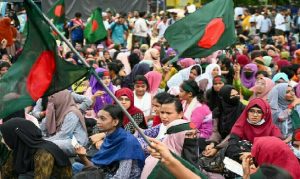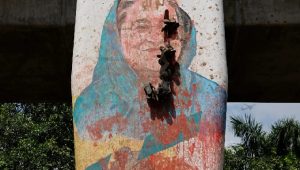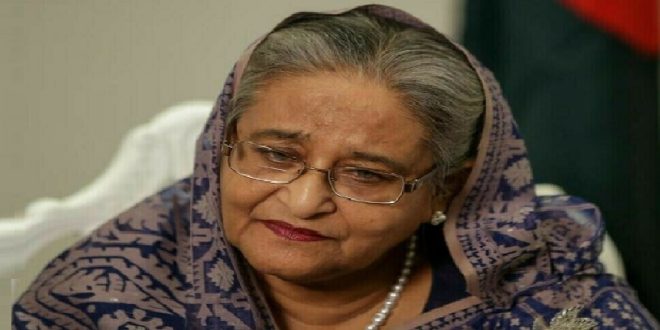12-08-2024
DHAKA: By all quantifiable measures, Bangladesh’s now deposed Prime Minister Sheikh Hasina was the most entrenched, dominant and brutal dictator the country had seen since its independence. She jailed, exiled and eliminated most of her political peers like no other ruler in South Asia’s history. She brought all the branches of the Bangladeshi state under her command with such great efficacy that at some point she became the state.
 Yet, a leaderless movement of college students challenged her with marches with pre-announced dates and venues. In a matter of weeks, these young revolutionaries drew the nation with them into the streets to the point that Hasina had to catch a helicopter to flee. They achieved something that established political rivals of the former prime minister had tried for over a decade but failed consistently.
Yet, a leaderless movement of college students challenged her with marches with pre-announced dates and venues. In a matter of weeks, these young revolutionaries drew the nation with them into the streets to the point that Hasina had to catch a helicopter to flee. They achieved something that established political rivals of the former prime minister had tried for over a decade but failed consistently.
While the young revolutionaries and their supporters have much cause to celebrate, the road ahead for the country will not be without challenges.
The beginning of the end for Hasina came as a group of young people started making demands for the removal of an unfair quota system in the distribution of civil service jobs, which was essentially giving preferential treatment to the relatives of her political cronies.
In organizing their protests, the students created a distributed co-leadership structure, where the leaders held the role of coordinators. They called their coalition the Students Against Discrimination movement. The coordinators came from both public and private educational institutions.
What could have been quelled with some simple promises of future reforms was inflamed by crass comments by the prime minister and brutal suppression by her security forces but the protest organizers were battle-tested and knew exactly what to expect.
Just six years ago, many of them had participated as teenagers in another massive wave of demonstrations which focused on the country’s lawless transportation sector. Those protests erupted after a commercial bus ran over two students. The vehicle that caused these deaths was owned by a company linked to a relative of a minister.
 Just like in 2024, in 2018 the youth were beaten mercilessly by Hasina’s civilian militia, that is, the student wing of the Awami League party. The use of violence managed to suppress the protests, but not before this generation of revolutionaries had gained enough experience in organizing successful protests, creating alternative command structures, using improvised communication techniques under internet blockades and evading government surveillance, etc.
Just like in 2024, in 2018 the youth were beaten mercilessly by Hasina’s civilian militia, that is, the student wing of the Awami League party. The use of violence managed to suppress the protests, but not before this generation of revolutionaries had gained enough experience in organizing successful protests, creating alternative command structures, using improvised communication techniques under internet blockades and evading government surveillance, etc.
All of these skills helped them in their successful bid to oust the most ruthless dictator in Bangladesh’s history.
Hasina has had to leave Bangladesh before. While she was residing in Europe, a bloody coup took place against her father, President Sheikh Mujibur Rahman, in 1975, which killed almost all of her family. She extended her stay abroad and only came back to the country in the early 1980s. She quickly gained prominence on the political scene and managed to create a cult-like following among the members of her father’s Awami League.
Following another military coup in 2006, both Hasina and her main political rival, Khaleda Zia, were about to lose their right to participate in politics in Bangladesh. Zia refused to go into exile and stayed in Bangladesh under house arrest. Hasina took the safe exit and spent time in Europe and the United States before returning to Bangladesh. She contested the 2008 election and won with a landslide. (Int’l Monitoring Desk)
 Pressmediaofindia
Pressmediaofindia




